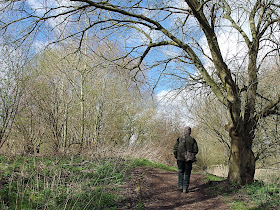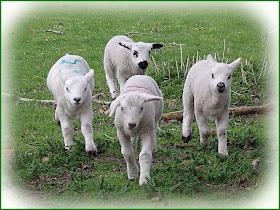Just a few of the places of interest in three Fenland towns we've visited recently.
Buttercross
Before all the mayhem and melodeons of The Straw Bear Festival in Whittlesea I wandered around the Market Square.
Before the age of Supermarkets there were just plain old markets where people gathered to trade, haggle and gossip as they had done for centuries. Most markets in England had a Market Cross around which trade congregated. In days of yore it is thought that these crosses stood in holy places and churchyards. As these became the main places where people gathered in numbers they became the logical places for traders to set up stalls. In time the commercial activity began to overwhelm the religious sites and was moved elsewhere - and the market crosses were moved too.
Although the name "market cross" was often retained other buildings sometimes took their place, such as this shelter in Whittlesea which, like other similar structures is known as a Buttercross, presumably from what was traded there.
Slim Clergy?
An unusually narrow church door also in Whittlesea.
A Warning To Others
Here lye interred in one grave
the Bodies of
WILLIAM BEAMISS
GEORGE CROW
JOHN DENNIS
ISAAC HEALEY
AND
THOMAS SOUTH
Who were all executed at Ely on the 28th
Day of June 1816 having been convicted
at the Special Assizes holden there of
divers Robberies during the Riots at Ely &
Littleport in the Month of May in that Year.
May their awful Fate
be a warning to others.
Riots in peaceful places like Ely and Littleport? Once the marshy Fens were drained fortunes were made by those who had put up the money for the project, but very little of this seeped down to those who worked the fields. The price of bread (the staple food of the workers) went up and wages stagnated. Those who were to blame for this state of affairs were mostly living far away and rarely visited the Fens, so the wrath of the hungry and poor was directed at any wealthy residents of Littleport who could be found. The unrest spread to Ely where there were attempts by the magistrates to find a peaceful solution. When this failed a hastily assembled militia rounded up the rioters. Twenty-three were condemned to death of whom all but five were later given lesser sentences. The stone seen above can be seen high on the wall of St Mary's Church in Ely.
Don't Lose Your Head
Despite Oliver Cromwell's connections with Ely at least one citizen still supports the other side as this door-knocker testifies.
Ghostbuster
This pretty but unremarkable house near to St Nicholas's Chapel in King's Lynn goes by the surprising name of "The Exorcist's House". Apparently at one time the post of exorcist was common within the church hierarchy. Possibly they were not very effective as there are many ghosts reported in town, including one in this very property!
The Jewish Cemetery
In the eighteenth and nineteenth centuries there was a small Jewish community in King's Lynn. This tiny cemetery, surrounded by a brick wall, can still be seen today.
Thank You, Mr Carnegie
Just one of the 2,509 public libraries funded by the businessman and philanthropist Andrew Carnegie stands in King's Lynn. Cynics have suggested that it was built here, close to the Royal Estate at Sandringham, as Carnegie wanted a knighthood. However this ignores the fact that he also funded 2,508 libraries in other places.
Take care.



















































